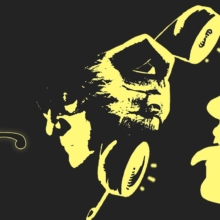Back to Back and Belly to Belly: Where Do We Go Now?

Enemies are people whose story you haven’t heard, or whose face you haven’t seen.
~ Irene Butter~
Take a moment to let your imagination loose. If you were tied back to back with someone and both of you looked straight ahead, what could you both see clearly? Nothing! You can’t see what is behind you. If you are tied together facing belly to belly, is it possible to feel neutral toward each other? Not likely! It would probably depend on how well you knew each other. Lately it seems like we are in both situations at the same time. Either way, the arrangement is most likely uncomfortable on both sides.
Getting back to reality, what can you do to manage your discomfort? You might start by introducing yourselves to each other. Most people start with something safe to see what reaction they get. If they receive a positive response they might try something a little more personal. If something uncomfortable arises, they have the option of a conversation, including listening to each other and explaining themselves.
In today’s politically, socially and morally charged climate, it is easy to wonder if those you encounter are potential friends or enemies. Is that what you want them to wonder about you? Most people don’t. I dare say most people want to be understood, taken seriously and respected. If you are determined to get along with other people, don’t wait for them to make the first move. Take the initiative yourself. If you don’t want to take that chance you can always bristle like a porcupine, warning others not to get too close to you.
Why are we at each others’ throats? On the surface it appears to be a matter of anger with political parties engaged in a struggle for power, racial and ethnic divides and a battle between genders as well as conflict over religious, moral and ethical principles. We have always had differences among groups on these as well as other issues. There have been times when we have been able to talk about these differences and to some extent arrive at a modicum of understanding if not agreement. At other times we have ended up in war.
Finding bridges among groups seems more difficult than ever these days. But why? The anger behind our conflict has its chief source in fear. What are we afraid of? Scott Bonn writes in Psychology Today about General Strain Theory. According to this theory, fear “leads to anger which in turn leads to violence. Such strain results from losing something of value or it can result from failing to attain something of value.” This could involve loss of a job, loss of financial security or a relationship turning sour.
For lack of any constructive alternatives to handle actual or feared losses, some people end up on the road to anger and possibly violence as a way to express their anger and rage. Some people grew up in families where they never saw good ways to handle fear and loss. They are more likely to follow the path I just mentioned.
So what do we do to get along better and avoid the strain? Here are some suggestions:
Action steps
• Start by finding out what is important to others.
• When they are ready, ask what bothers them.
• Mention what is important to you.
• Talk about what bothers you.
• Find ways to work together toward mutual goals.
Source: http://EzineArticles.com/10021316











